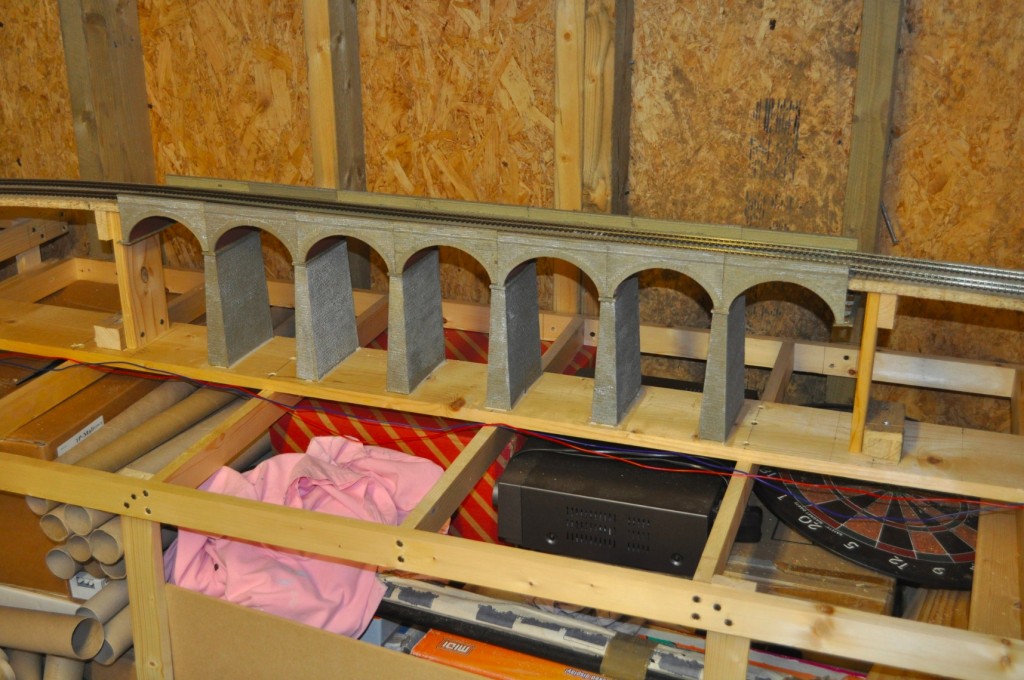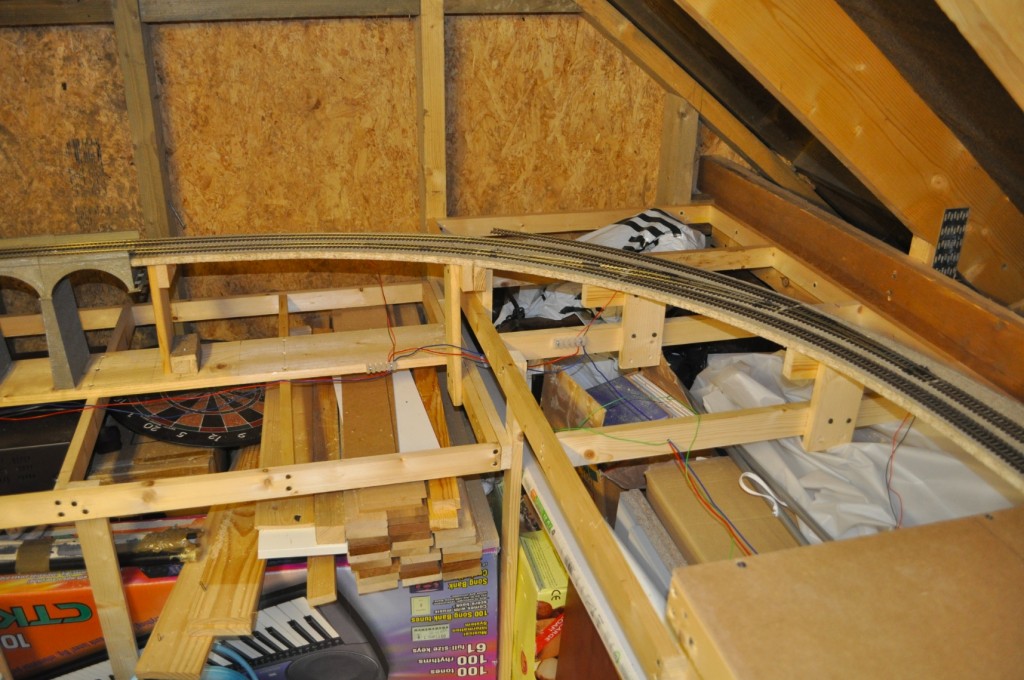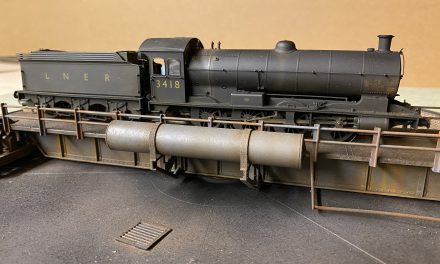We are a week into 2012, the festive season is well and truly over, and New Year resolutions already broken. It is time to look seriously at some objectives for 2012.
On the Rede Valley, my 2011 aim was to have an operational layout that could run trains. The main obstacle to this had been completion of the Viaduct, so that the continuous main line circuit could be completed. This was achieved, and by and large the layout is operational. There is still quite a lot of track to lay in order to complete the total plan: The main freight yard and the locomotive depot haven’t been started; there is an extra set of platform roads to lay through the main station, and the branch line out of Otterburn Junction into the military camp hasn’t even been planned.
With all this work to do, its difficult to know what to do next. All the work so far has been about building baseboards, laying track and connecting up the electrics. I’d rather like to have some variety, so the 2012 objective has to be about completing part of the layout scenically.
The intention is that the Rede Valley is a series of dioramas, with the flexibility that the time period in which each is set, and indeed the time of year each represents, is not always the same. For instance I intend to model Otterburn Junction in LNER 1930’s while the main station Monkchester will be set in the 50’s or 60’s. The easiest of these dioramas to complete should be the Viaduct section, as that will be modelled as an open moorland landscape, loosely based around the Waverley line through the Scottish Borders. So my 2012 objective for the layout is to complete the viaduct diorama to a standard that would be good enough for publication in the UK model press.
The pictures below illustrate the starting point for the project with the Wills Viaduct in place:
The objective is to capture the essence of Waverley, and there will be 4 main influences from the real railway:
- The viaduct at Shankend
- The signal box and siding at Whitrope Summit
- The famous curves and overbridge around Riccarton Junction
- Whitrope tunnel
To show what I’m after here is a series of links to images of the real railway:
Shankend, with Peak, classic Waverley.
Shankend,again, with A2, Tudor minstrel
Brush 4 passing the signal box at Whitrope summit
A4, Whitrope Summit, clouds of smoke, and snow. What more inspiration do you need? Its almost tempting to set this part of the layout in mid winter
The section needs to have the feel of an open, uncluttered moorland landscape, and one of the challenges will be to represent the rugged border landscape.
A number of tasks need to be undertaken:
- Finish the track work so that it runs faultlessly and lay the siding for the banking engines to reverse into having completed the tough climb to the summit
- Panel the walls and ceiling around the section
- Install trackbed and track behind the summit signal box that will eventually be hidden under the hillside. These will be needed to accomodate suburban trains arriving and departing from the main station area (this is to be built on the solid topped baseboard that can be seen in the corner of the Rede Head Summit photo above.
- These train services will be fully automated so the hidden tracks will need to be fitted with Irdot infra red detectors both to stop the arriving trains and to record track occupancy of the hidden tracks.
- I also intend to have block detection operating on the main lines so detectors will also need to be fitted to these while the underside of the trackbed is reasonably accessible.
So all in all thats quite a bit of work before I can even think about forming the basic shape of the landscape.
Some things have started though. A trip to B&Q resulted in the purchase of several sheets of MDF to panel the walls and ceiling, and also to form the landscape contours along the edge of the baseboards. At the same time a roll of chicken wire was obtained, this will be used to form the basic shape of the landscape and will be covered with plaster soaked sheeting to form the surface.
25 yards of Peco code 75 has also arrived to allow the track laying to take place. Hopefully this will provide sufficient to lay all the remaining areas of the layout, but hopefully doesn’t take the 5 years that the last pack took.
Now off to the railway room to start the weekend’s activities.








